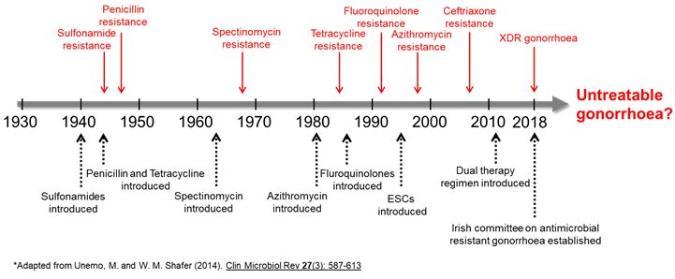Gonorrhoea antimicrobial resistance
Historically, Neisseria gonorrhoeae (N. gonorrhoeae) has rapidly become resistant to each of the antimicrobial drug classes used to treat infection, following introduction of that drug class as frontline treatment for gonorrhoea.
With no available vaccine for the prevention of gonorrhoea and limited new antimicrobials in the development pipeline, the extended spectrum cephalosporin (ESC) class of antibiotics was considered to be the last line of defence against gonorrhoea but there have been global reports of reduced susceptibility and resistance to cephalosporins, as well as the emergence of extensively drug resistant (XDR) gonorrhoea strains, prompting the need for new strategies in the prevention and treatment of gonorrhoea.

Neisseria gonorrhoeae (N. gonorrhoeae) resistance to ESCs has been listed by the World Health Organization (WHO) as one of nine priority bacteria-antibacterial drug combinations of international concern for the development of antimicrobial resistance:
WHO: Antimicrobial Resistance World Report on Surveillance, 2014
The Centers for Disease Prevention and Control (CDC) have assigned threat level “Urgent” to antimicrobial resistant N. gonorrhoeae as an immediate public health threat that requires urgent and aggressive action:
CDC: Antibiotic Resistance Threats in the United States, 2013
An Irish multi-disciplinary national forum was established in 2018 to monitor the threat of gonorrhoea antimicrobial resistance in Ireland.
Last updated: 4 September 2018


